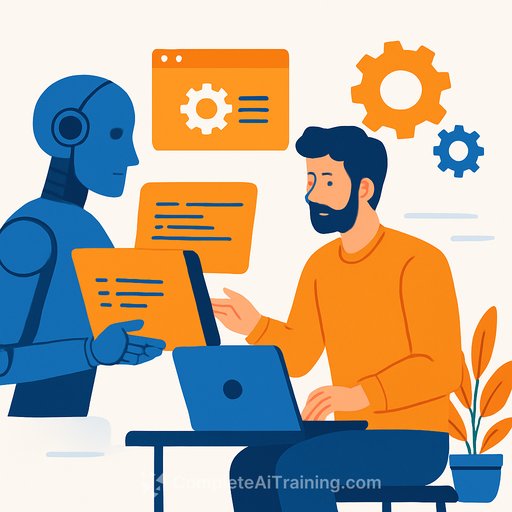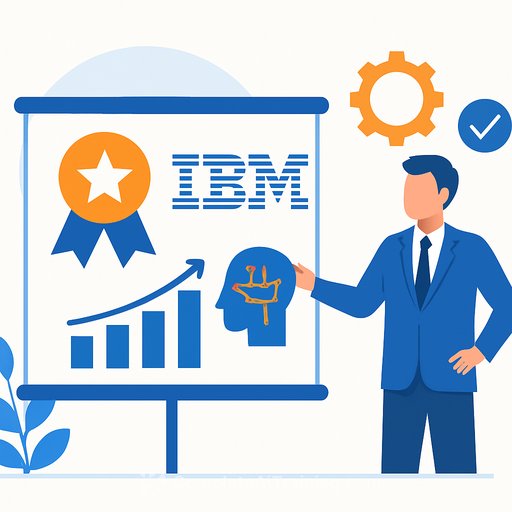AI and Custom Software Development: Balancing Speed and Strategy
Artificial Intelligence is accelerating custom software development, cutting down timelines and costs. But this speed boost comes with new challenges that demand careful oversight. Agencies must prioritize strategy and human judgment, using AI as a tool to solve the right problems rather than just pushing for faster delivery.
According to PwC’s October 2024 Pulse Survey, nearly half of technology leaders say AI is fully integrated into their core business strategy. This shift is reshaping industries, with software development agencies facing a critical turning point. The process of designing, building, and maintaining software is changing fast: projects move quicker and cost less, yet risks like bugs and unpredictable outcomes are more common.
Meet Scott Jackson
Scott Jackson, CEO and founder of Essential Designs, has over two decades in software development and nearly 17 years leading his agency. His team builds custom software solutions for a range of clients, including government and private sectors. Scott highlights how AI has altered development dynamics: “Development has gotten faster, cheaper, and way more unpredictable,” he says. Half the job now involves managing AI’s tendencies to overbuild features, while the rest focuses on leveraging it to ship products in half the time.
While AI accelerates workflows, it introduces risks like hallucinations and hidden bugs that can cause major issues if unchecked. Scott compares AI to “hiring 1,000 interns who don’t listen very well.”
Another major shift is the rise of AI-powered low-code and no-code platforms. These tools enable business users with little coding experience to build applications quickly, reducing the need for agencies to build everything from scratch. However, this often comes at the expense of deep customization and scalability. Agencies are not obsolete, but their roles are evolving into strategic partners and problem solvers.
What Agencies Need to Focus On
Scott stresses that agencies bring value through guidance and strategy, ensuring AI tools address the right problems. “AI used to mean ‘hobby project,’ but now it’s serious. Real companies are betting real money on it,” he explains. However, without skilled people overseeing AI, it can produce poor-quality software faster.
Agencies should not try to out-code AI but should ask critical questions AI cannot: What defines success for this product? Is automation the right solution or just a shiny distraction? How will the tool scale and integrate over time? Without this strategic layer, AI can generate bloated features, poor user experience, or miss the actual problem.
The biggest mistake businesses make is deploying AI without clear goals or proper training. Scott advises, “Train your people first. Give them room to experiment (and fail). Don’t expect miracles overnight.” Agencies act as translators between business objectives and technical execution, leaning into structured thinking and experience to frame the right problems before choosing solutions.
AI Still Needs Humans in the Loop
One example from Essential Designs involved an insurance client needing to process over 100,000 forms quickly. The agency built an AI-powered quality assurance system that flagged errors in real time. It was a clear success but required ongoing oversight.
Scott points out that key AI metrics include speed, accuracy, and cost savings. Agencies remain essential as safeguards against misuse and misalignment. They help clients ask the right questions, build error-checking into systems, and ensure AI outputs match business goals. “Tools don’t replace thinking,” he says. “You can hand someone a hammer, but it doesn’t mean they can build a house that won’t fall down.”
How Agencies Are Adapting
AI changes how software is built. Agencies must shift from pure execution to enabling smarter solutions by focusing on strategy, human insight, and experience. Here’s what smart agencies are doing:
- Get AI-Literate Fast: Teams don’t need to be experts but must understand AI capabilities and limits, including LLMs and no-code tools. Continuous experimentation builds fluency.
- Lead with Strategy, Not Code: Clients need help defining what to build and why. Strategic partners earn trust and repeat business.
- Adopt Human-in-the-Loop Models: AI requires oversight. Integrate review, testing, and risk mitigation in AI-powered projects.
- Invest in Continuous Learning: Create space for teams to experiment and share insights, turning AI into an advantage.
- Focus on Outcomes, Not Outputs: Frame value around measurable business results like time saved, improved quality, and customer impact.
For those looking to build AI skills that matter, exploring targeted training can be a solid step. Resources like Complete AI Training offer courses on practical AI tools and techniques relevant to developers and IT professionals.
In short, AI accelerates software development but doesn’t replace the need for clear strategy and experienced judgment. Agencies that embrace this balance will stay relevant and deliver real value in the AI era.
Your membership also unlocks:






